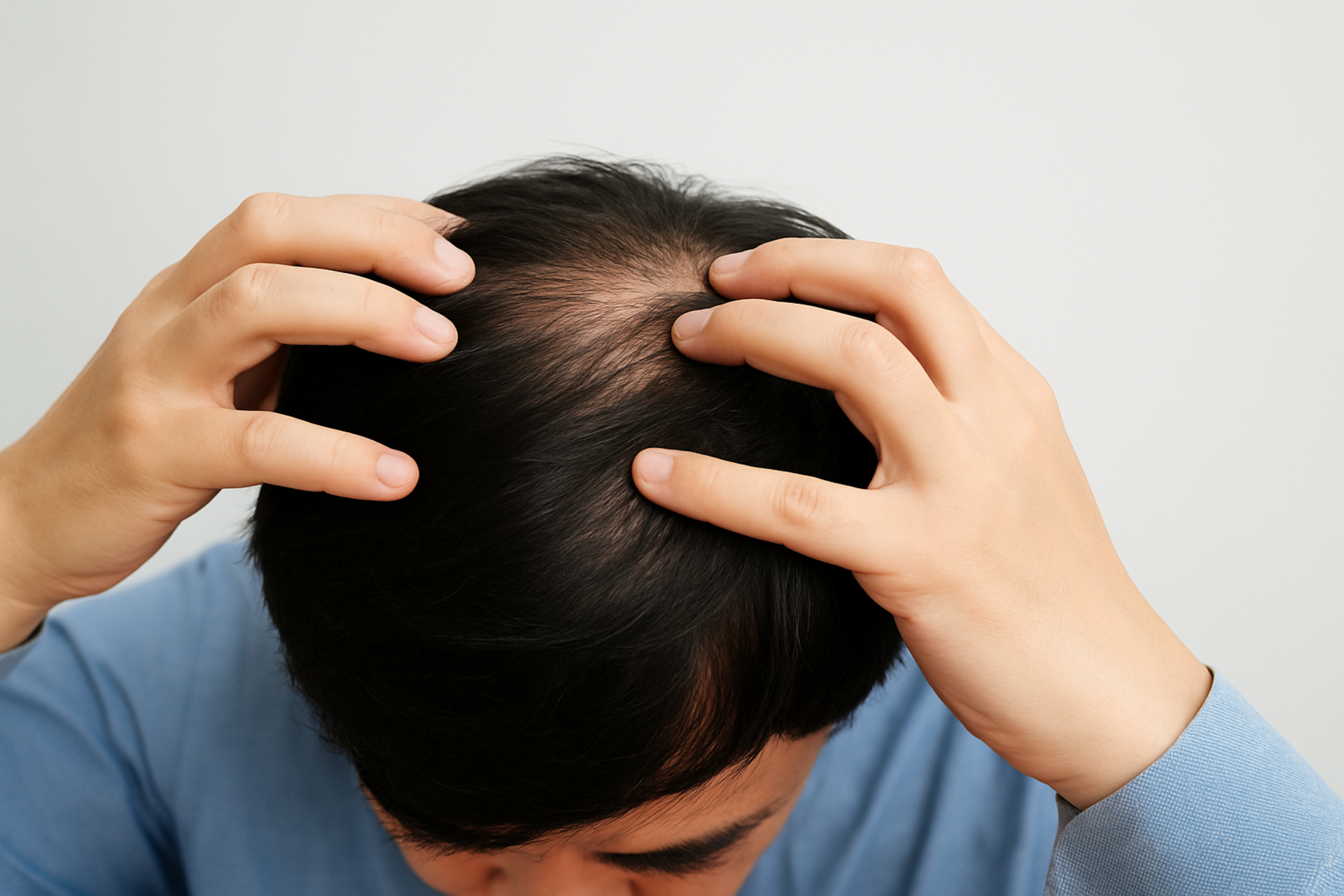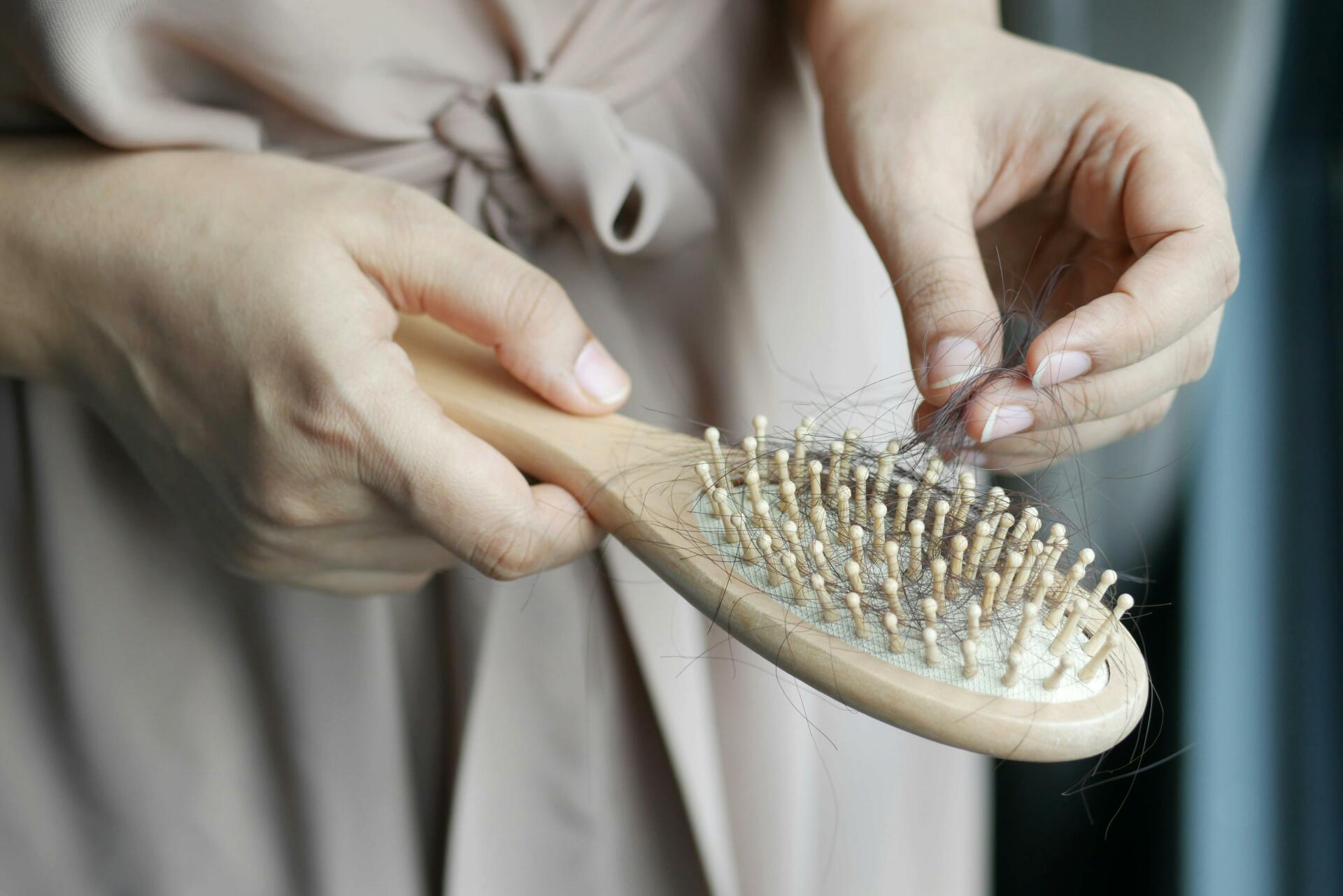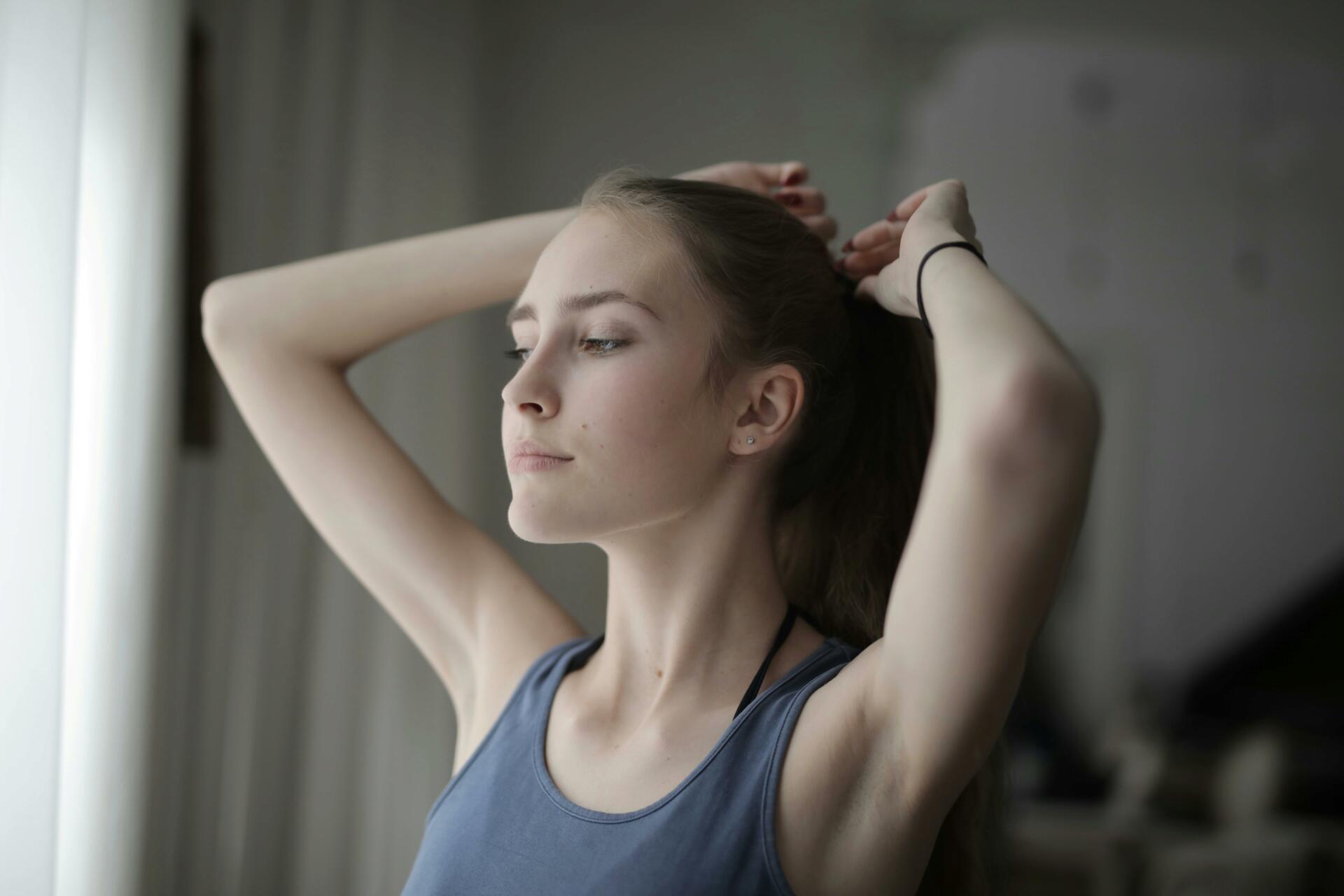FREE NZ DELIVERY FOR ORDERS OVER $75
What Causes Hair Loss?
Noticing more strands in your brush than usual? A bit of thinning around your hairline? You’re definitely not alone - but that doesn’t make it any less stressful.
Hair loss affects both women and men, and it can happen for all sorts of reasons: hormones, stress, age, diet, or just plain genetics. And while it’s easy to fall down a panic-scroll rabbit hole, the truth is: not all hair loss is the same, and not all of it is permanent.
In this blog, we’re breaking down what actually counts as hair loss (versus normal shedding), how it can look different for men and women, and what role your scalp health plays in it all. Most importantly, we’ll help you figure out what you can actually do about it - with salon-quality solutions that support your hair from root to tip.
Let’s clear up the confusion and get your hair (and confidence) back on track.

What Counts as Hair Loss?
Let’s start by clearing something up: losing some hair is totally normal.
In fact, most people shed anywhere from 50 to 100 hairs a day - part of your body’s natural growth cycle. You’ll usually notice this when you brush, wash your hair, or even just wake up with a few strands on your pillow.
But if that daily loss starts to increase - or the hair isn’t growing back at the same pace - you might be dealing with actual hair loss.
Here’s how to tell the difference:
- More hair than usual in the shower drain or on your brush
- Noticeable thinning, especially around your part or temples
- Widening part or receding hairline
- Bald patches or areas where the scalp becomes more visible
- A ponytail that feels thinner than it used to
Hair loss can be gradual or sudden, and it can look different for everyone depending on the cause (which we’ll get into soon).
What’s important is noticing the changes and paying attention to patterns - so you can address the issue early, rather than letting it worsen over time.

Hair Loss in Women vs Men: What’s the Difference?
While both men and women experience hair loss, the underlying causes and visible patterns often differ – and that can impact how it’s treated, too.
Hair Loss in Men
Men typically experience male pattern baldness, or androgenetic alopecia. It’s often hereditary and strongly influenced by hormones, particularly DHT (a byproduct of testosterone).
This type of hair loss usually follows a predictable pattern, starting at the temples or crown and progressing to a more pronounced receding hairline or bald spots.
Common signs in men:
- Thinning at the temples
- Balding on the crown
- Receding hairline
- Complete baldness in some areas over time
It tends to be more visible and socially recognised – but that doesn’t make it any easier to deal with.
Hair Loss in Women
Women also experience androgenetic alopecia, but the pattern tends to be more diffuse - think overall thinning rather than distinct bald patches. Female hair loss can be triggered by hormonal shifts, stress, iron deficiency, thyroid issues, or even something as simple as tight ponytails.
Common signs in women:
- Overall thinning, especially at the part or crown
- Increased hair fall after washing or brushing
- Reduced hair density (you might notice your ponytail feels thinner)
- A wider part line
And because female hair loss often happens more gradually, it can fly under the radar for longer - making early awareness key.

What Causes Hair Loss?
Hair loss doesn’t always show up the same way - and it’s not always caused by the same thing either.
In fact, the reason your hair’s falling out (or just thinning a little too much for comfort) can depend on your hormones, your lifestyle, your family history, and even how you style your hair.
Here’s a breakdown of the most common causes we see - and how they might be showing up for you.
1. Hormonal Changes
Whether it’s pregnancy, menopause, starting or stopping birth control, or thyroid issues - hormones can throw your hair into chaos.
- For women, this usually means sudden shedding (hello, postpartum hair loss) or thinning through the mid-lengths and crown.
- For men, it’s more often a receding hairline or bald spot creeping in slowly, thanks to DHT - a hormone that shrinks the hair follicle over time.
If your hair loss lines up with a hormonal shift, chances are it’s not permanent - but it can still be frustrating.
2. Genetics (Cheers, Mum and Dad)
Yep, hair loss can run in the family.
If your parents or grandparents experienced thinning, there's a good chance you might too.
- In men, this usually shows up as male pattern baldness - starting at the temples or crown.
- In women, it’s more likely to be overall thinning or a noticeably wider part.
Genetic hair loss tends to be gradual, but there are ways to slow it down or manage it well.
3. Stress (Because of Course)
Stress doesn’t just mess with your mood - it can also mess with your hair. High-stress events like illness, surgery, emotional upheaval, or even Covid can shock your system into shedding mode.
This is called telogen effluvium, and it typically shows up 2–3 months after the stressful event. The good news? It usually grows back - with time, rest, and a little scalp TLC.
4. Diet That’s Not Feeding Your Follicles
Your hair needs fuel to grow strong - and if you’re not getting enough iron, protein, zinc, or B vitamins, it’ll show.
- If you’re skipping meals, on a crash diet, or following a super restrictive plan, your hair may pay the price.
- Even plant-based eaters sometimes need to supplement or tweak things to support healthy growth.
Basically: if your body’s missing something, your hair is one of the first places to show it.
5. Heat, Breakage & Too-Tight Hairstyles
Not all hair loss comes from the root.
Sometimes, it’s breakage - especially if you’re heat-styling daily, brushing too rough, or rocking tight buns and braids all the time.
- Repeated tension (like slick ponytails or braids) can lead to traction alopecia, where the hairline starts to recede.
- Overusing heat tools without protection can leave strands brittle and prone to snapping.
If you’re seeing shorter, broken hairs or flyaways rather than strands with a bulb at the root, breakage might be your main issue.
6. Medical Stuff (And Medications)
Sometimes, hair loss is part of a bigger health puzzle.
Conditions like:
- PCOS
- Thyroid disorders
- Autoimmune issues (like alopecia areata)
...can all affect your hair. So can medications for cancer, high blood pressure, depression, and more. If your hair loss is sudden, patchy, or accompanied by other symptoms, have a chat with your GP to rule out anything serious.

The Role of Scalp Health
If your hair is the garden, then your scalp is the soil - and if that soil’s not healthy, the growth doesn’t stand a chance.
A dry, irritated, oily, or inflamed scalp can throw your whole hair cycle out of whack, making it harder for strands to grow strong (or grow at all).
Why Scalp Health Matters
Every hair on your head starts its life in a follicle just beneath your scalp. Those follicles need the right conditions to thrive - clean, balanced, well-nourished skin that’s free from inflammation, buildup, or bacteria.
If the scalp gets congested or irritated, it can:
- Slow growth
- Weaken strands at the root
- Cause itching, flaking, or tenderness
- Trigger excess shedding
And if left unchecked, those little issues can snowball into longer-term hair loss.
Signs Your Scalp Might Be Struggling
Keep an eye out for:
- Persistent itching or tenderness
- Excess oiliness or flaking
- Redness, irritation or small bumps
- Hair that feels thinner or sheds more than usual
A healthy scalp shouldn’t feel uncomfortable or high-maintenance - if it does, it’s time to give it some love.
We've got some great tips on keeping your scalp happy in our blog!
So... What Can You Actually Do About It?
You’ve sussed the cause - now what?
While not all hair loss can be reversed at home, there’s plenty you can do to support healthier growth, reduce fall, and keep more of the hair you’ve got.
Here’s where we recommend starting:
Treat Your Scalp Right
We've said it before and we'll say it again - healthy hair starts at the root. That means your scalp needs to be clean, balanced, and irritation-free.
🧴 Use scalp-loving formulas like the Nioxin Scalp Recovery range or Davroe Scalp Remedy to calm itchiness, manage oil, and keep things fresh.
🙆🏼 Go for scalp-focused shampoos like Nioxin Scalp Recovery Soothing Shampoo, Biolage Scalp Sync Calming Shampoo, or Biolage Scalp Sync Clarifying Shampoo to remove build-up, excess oil, and impurities that might be clogging things up.
🛁 Try a pre-wash exfoliator like the Nioxin Scalp Purifying Exfoliator to gently buff away debris and boost circulation without irritation.
💧 Avoid over-washing, harsh sulphates (ahem, Woolies-bought shampoo!), or anything that strips your natural oils - they’re part of your scalp’s defence system!
🎯 Add targeted treatments like Biolage Scalp Sync Oil Balancing Serum or Scalp Sync Purifying Scalp Concentrate (especially helpful if you battle with dandruff, too!) to bring balance back and create a healthy environment for growth.
![Nioxin Scalp Purifying Exfoliator [50ml]](https://static.holygrailhaircare.co.nz/img/products/sm/99350179972.jpg)
![Nioxin Scalp Recovery System Purifying Shampoo [200ml]](https://static.holygrailhaircare.co.nz/img/products/sm/99350179969.jpg)
![Nioxin Scalp Recovery Moisturizing Conditioner [200ml]](https://static.holygrailhaircare.co.nz/img/products/sm/99350179954.jpg)
![Nioxin Scalp Recovery Scalp Soothing Serum [100ml]](https://static.holygrailhaircare.co.nz/img/products/sm/99350179961.jpg)
![Davroe Scalp Remedy Shampoo [325ml]](https://static.holygrailhaircare.co.nz/img/products/sm/d3550.jpg)
![Davroe Scalp Remedy Conditioner [325ml]](https://static.holygrailhaircare.co.nz/img/products/sm/d3551.jpg)
![Davroe Scalp Remedy Lotion Spray [125ml]](https://static.holygrailhaircare.co.nz/img/products/sm/d3552.jpg)
Strengthen + Protect Your Hair
The less breakage you have, the fuller your hair stays.
Even if shedding is out of your hands, you can still protect the strands that remain.
💪 Use bond-building and reparative treatments like Olaplex No.3, Redken Acidic Perfecting Leave-In, or RPR Repair My Hair Keratin Mask to rebuild strength and reduce daily breakage.
🧴Treatments like the Nioxin Anti-Breakage Strengthening Mask help rebuild elasticity and strength - so your ends stay intact and your strands hold up better between washes and heat styling.
✂️ Apply heat protectants before styling, and give ends a little extra love between trims.
![Olaplex No.3 Hair Perfector Treatment [100ml]](https://static.holygrailhaircare.co.nz/img/products/sm/ola62130.jpg)
![Olaplex No.4 Bond Maintenance Shampoo [250ml]](https://static.holygrailhaircare.co.nz/img/products/sm/ola62160.jpg)
![Olaplex No.5 Bond Maintenance Conditioner [250ml]](https://static.holygrailhaircare.co.nz/img/products/sm/ola62170.jpg)
![Redken Acidic Perfecting Leave-In Treatment [150ml]](https://static.holygrailhaircare.co.nz/img/products/sm/rdkp2034001.jpg)
![Nioxin Anti-Breakage Strengthening Mask [150ml]](https://static.holygrailhaircare.co.nz/img/products/sm/99350180127.jpg)
Stimulate Growth (Gently)
No gimmicks here - just small habits that add up.
👐 Scalp massage boosts circulation to your follicles. Try doing it while shampooing or with a scalp brush in the evening.
🌿 Look for growth-friendly ingredients like biotin, caffeine, rosemary, or niacin in your shampoo or leave-in.
💨 Use lightweight leave-ins or thickening sprays (like Nioxin Diaboost) to support growth without clogging up your scalp. You can also try growth-supporting serums like Nioxin Hair Fall Defence Serum or Nioxin Scalp Recovery Scalp Soothing Serum to nourish and protect the scalp barrier while supporting a healthy growth cycle.
![Nioxin Diaboost Hair Thickening Serum [100ml]](https://static.holygrailhaircare.co.nz/img/products/sm/99350179946.jpg)
![Nioxin Scalp Recovery Scalp Soothing Serum [100ml]](https://static.holygrailhaircare.co.nz/img/products/sm/99350179961.jpg)
Rethink Your Styling Routine
If your hair’s falling faster than it’s growing, your styling habits could be making it worse.
🔥 Cut back on heat styling (or at least turn the temp down).
🪢 Switch tight ponytails or buns for looser styles that don’t pull at the root.
🪮 Choose soft, snag-free brushes and wide-tooth combs to avoid snapping strands mid-style.
When to See a Professional
Sometimes, home care can only go so far - and that’s OK.
If you’ve tried everything (and your bathroom is practically a mini salon) but your hair loss is still getting worse, it’s worth getting expert advice.
A GP, dermatologist, or trichologist can run blood tests, check for underlying conditions, or offer medical treatments that target the root cause.
We recommend seeing a professional if:
- You’re losing clumps of hair or noticing bald patches
- Your part is widening or scalp is becoming more visible
- Your shedding has been going on for months with no improvement
- Your scalp is red, sore, inflamed or flaking excessively
- You’ve recently had major stress, illness, or hormonal changes
Getting support early can help you take action sooner - and give you peace of mind while you’re figuring things out.
Let's Help You Turn Hair Loss into Hair Love
Hair loss can feel overwhelming, but understanding what’s behind it is the first step toward turning things around. Whether it’s stress, hormones, styling habits or scalp health, there’s usually more you can do than you think.
From gentle treatments to expert-formulated scalp care, Holy Grail Haircare has salon-grade options that don’t cost the earth - and we’re always here to help you find what works best for your hair journey.
💬 Still not sure where to start? Flick us a message - we’re happy to help.





